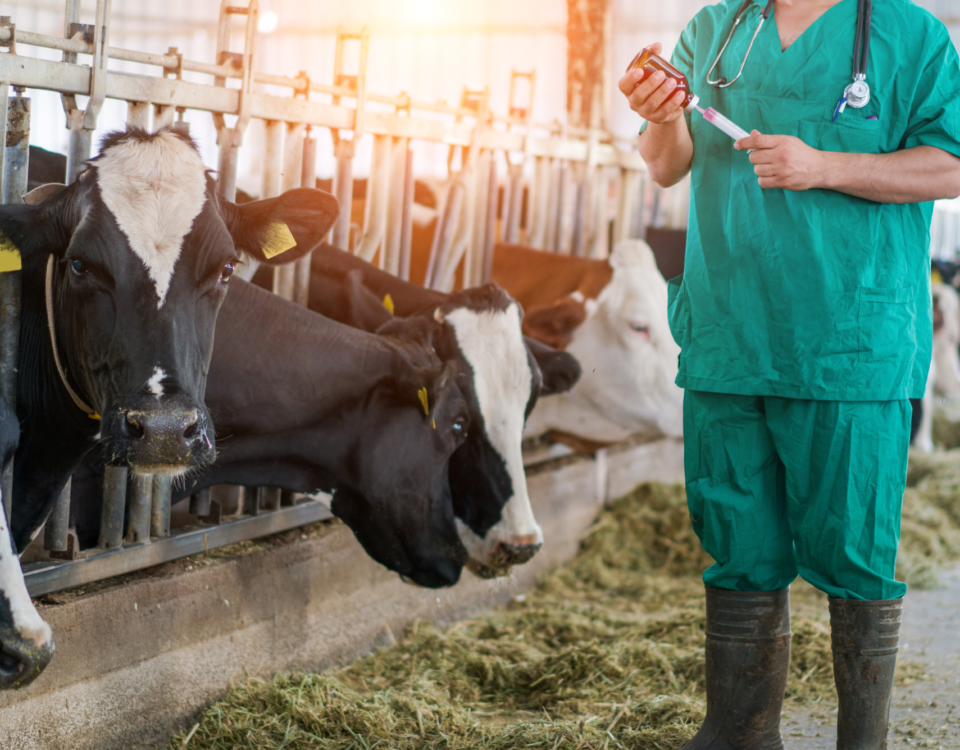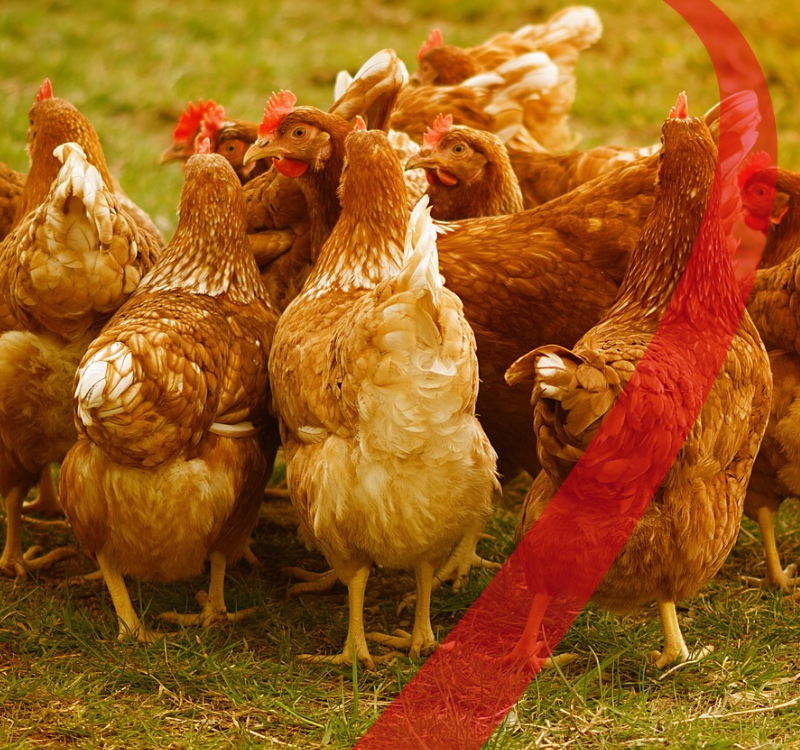Egg shell quality

Heat Stress in Pigs
July 6, 2020
Patologie Podali nel Bovino, come prevenirle
September 21, 2020FORMATION AND QUALITY OF EGGSHELLS
MANAGING THE CALCIUM NEED BY CHOOSING THE IDEAL SOURCE
97-98% of eggshells are composed of calcium carbonate.
The thickness of eggshells depends on the quantity of calcium deposited during its formation in the uterus and how long the process takes (up to 15 hours).
When the egg enters the uterus and begins the deposition of the shell, the synthesis of active vitamin D and transport-proteins in the intestine increases, with the doubling of the absorption of calcium.
The calcium necessary for the deposition of the eggshell comes mainly from intestinal absorption and bone reconstruction.
While in the hen fed with a balanced diet and good sources of calcium, dietary calcium is the primary source of calcium provision; in the event of failure or an incorrect intake with feeding, a particular bone matrix is formed which appears in the hen under the hormonal influence a couple of weeks before the start of the egg-laying and which is continuously remodeling.
This matrix can satisfy up to 40% of the needs when the animal does not feed (therefore, it does not supply food calcium), such as during periods of darkness, stress, or when the diet is not balanced.
Since a large part of the shell synthesis occurs during the dark hours, the bone contribution to the eggshell formation is essential. However, the more significant is the contribution of calcium from the remodeling of the bone matrix, the lower the thickness of the eggshell.
Incorrect intake of calcium is compensated, but it results in a less robust eggshell.
The following factors affect the correct absorption of calcium: the source, the size of the particles, the amount of phosphorus, and the levels of vitamin D.
Vitamin D is as essential as calcium itself as it regulates the absorption of calcium.
High levels of phosphorus inhibit the absorption of intestinal calcium and its mobilization from the bone matrix. The calcium-phosphorus ratio should be kept 4:1 during deposition to ensure proper calcium absorption.
An acidic intestinal pH maximizes the absorption of calcium and phosphorus, so the acidification of the diet with organic acids plays a vital role in the egg-laying hen.
CALCIUM SOURCES
- LIMESTONE: it is the least expensive source of calcium and can derive from extraction or synthesis. The critical thing to remember when choosing this source is the particle size. A finely ground limestone is quickly absorbed; therefore, it is useful to promptly reconstitute the hen’s bone matrix or during the eggshell formation if the hen is feeding. However, this is a process that occurs, especially during the dark hours, it is advisable to provide coarser particles that will stay longer in the gastrointestinal tract. A 60:40 ratio between coarse and fine particles is recommended. The limestone solubility also plays an essential role in ensuring that calcium is assimilated and depends on the intestinal pH. The more acidic the intestinal pH, the higher the solubility
- OYSTER SHELLS/SHELLS GRAIN: Source of calcium carbonate derives from the crushing of the shells of bivalve mollusks. The size of source grain and its composition delay the solubility up to 5-10 times compared to that of synthetic limestone.
- CALCAREOUS MARINE ALGAE: Marine algae contain pigments, vitamins, prebiotics in the form of complex carbohydrates, and chelated micro-minerals. Calcareous marine algae are, therefore, not only a source of calcium. In addition to making readily assimilable organic calcium, they contain substances involved in the maintenance of intestinal health, the immune status and the quality of the egg. Studies conducted on the use of some species of algae (Sargassum spp.) As a supplement to the diet, it has revealed an increase in the egg’s internal and external quality (lower cholesterol levels, more colored yolks, more robust and pigmented shell).
- CALCIUM GLUCONATE: Source of organic calcium indicated that environmental or managerial stress is highly bioavailable in case of deficiencies. During the digestive process, calcium gluconate releases gluconic acid. This molecule will support the metabolism of calcium and energy in stressful situations (heat stress, excessive bone mobilization, or decline in deposition syndrome), and is responsible for the decrease in production or product quality.
- CALCIUM PIDOLATE: Source of organic calcium. Calcium here is bound to two molecules of pidolic acid. This source has a dual function to bring calcium and, at the same time, amino acids for protein synthesis. The pidolic acid is, in fact, the substrate for the production of the amino acids’ arginine and proline, essential constituents of the transport proteins of calcium and collagen: component of the bone and the internal membrane of the eggshell. This source is recommended under stress or with the aging of hens to absorb and mobilize calcium. It is reported that after 40 weeks, the ability to metabolize calcium is reduced by 50%.
Tecozoo has considered different solutions to the quality of the eggshell in every moment of the production cycle and under stress conditions.
Tecnozoo offers liquid or powder complementary feed with calcium sources carefully studied and selected for you in response to your every need.
BIBLIOGRAPHY
- https://www.unaitalia.com/il-giusto-livello-di-calcio-per-le-ovaiole
- https://web.terzi.it/zootecnia-2/
- NR JoshiDN Desai AS Ranade PE Avari – “Effect of Calcium Pidolate on Egg
- Production and Egg Quality during the Last Phase of Production Cycle with Reducing Levels of Inorganic Calcium “
- KW WASHBURN – “Incidence, Cause, and Prevention of Egg Shell Breakage in Commercial Production”
- https://www.ncbi.nlm.nih.gov/books/NBK232332/ – Effect of Environment on Nutrient Requirements of Domestic Animals.
- https://thepoultrysite.com/articles/factors-influencing-shell-quality
- Elaroussi et al. – “Calcium homeostasis in the laying hen. Age and dietary calcium effects.”
- Olubunmi Gabriel Fasanmi – “Therapeutic Importance of Calcium Gluconate in Cage Layer Fatigue (CLF), the Effects on Egg Production, Haematology and Serum Biochemistry of Commercial Layers.”
- Al-Zahrani et al. – “The effect of supplementation of two levels of calcium pidolate and two levels of 25 – hydroxycholechaciferol on egg quality in commercial laying hens.”
- Gilles Tran et al. – “Seaweeds for livestock diets: A review.”
- Rosie Burgin – “Benefits of seaweed in poultry diets.”
- Heuzé V., Tran G., Giger-Reverdin S., Lessire M., Lebas F., 2017 – Seaweeds (marine macroalgae)



